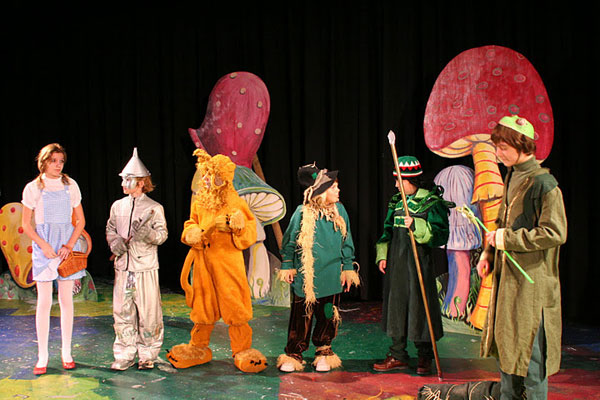102
LITERATURE IN ENGLISH ADVANCED LEVEL PAPER TWO: DRAMA & PLAYS Many students are confused on what could be the difference …
LITERATURE IN ENGLISH ADVANCED LEVEL PAPER TWO: DRAMA & PLAYS
Many students are confused on what could be the difference between a play and drama. However, the two are more or less the same.To throw more light on the two aspects, Quora defines them as, "The most significant difference between these the entities is that drama refers to a from of written literature that is intended for performance while play refers to a theatrical performance . In simple words , a drama is to be read and a play is to be seen. But in a play, the audience get to see the story enacted."Course Currilcum
- LIT/A/2: SAINT JOAN By Benard Shaw FREE 00:00:00
- Saint Joan chronicles the life, death, and legacy of Joan of Arc. George Bernard Shaw published the play in 1924, and won the Nobel Prize for literature the following year. You'd think the guy would be happy right? The Nobel is pretty much one of the most respected awards on Earth. Shaw didn't see it that way. He wrote to one of his friends, "The Nobel was a hideous calamity for me. It was really almost as bad as my 70th birthday" (source).
- LIT/A/2: SAINT JOAN By Benard Shaw assignment 10, 00:00
- LIT/A/2: THE FLOODS By John Ruganda FREE 00:00:00
- The floods’ is a drama divided into three parts, defined as waves. The first wave is an introductory part, where we get to know the characters. The play starts with an announcement over the radio that there will be floods soon enough, so the people were being advised to run to the rescue boat to be safe.
- LIT/A/2: THE FLOODS By John Ruganda assignment 10, 00:00
- LIT/A/2: THE COUNTRY WIFE By William Wycherley 00:00:00
- William Wycherly was born in Shropshire, England, into a moderately wealthy, Royalist family. He went to school in France where he briefly converted to Catholicism, returning to Protestantism after coming back to England in the 1650s. Wycherly took up residence at Oxford on his return but left Oxford for London in 1659. He joined the armed forces and was sent first to Ireland, in 1662, and later to Madrid. In 1671, Wycherly produced his first play, Love in a Wood, which was popular in the court of Charles II. This play, and another, The Plain Dealer, were performed in 1675 and secured Wycherly’s reputation in Charles II’s court and in London high society. He had a reputation as a hedonist, a man’s man, and a confirmed bachelor; qualities which were encouraged and valorized during the Restoration period. In 1679, Wycherly secretly married a wealthy widow, the Countess of Drogheda. He deliberately kept the marriage a secret to protect his reputation as a libertine, but word got out and the marriage put him out of favor with Charles II.
- LIT/A/2: THE COUNTRY WIFE By William Wycherley assignment 10, 00:00
- LITA/2: RICHARD 111 By William Shakespeare Unlimited
- 1592–94 and published in 1597 in a quarto edition seemingly reconstructed from memory by the acting company when a copy of the play was missing. The text in the First Folio of 1623 is substantially better, having been heavily corrected with reference to an independent manuscript. Richard III is the last in a sequence of four history plays (the others being Henry VI, Part 1, Henry VI, Part 2, and Henry VI, Part 3) known collectively as the “first tetralogy,” treating major events of English history during the late 14th and early 15th centuries. For the events of the play, Shakespeare relied mainly on the chronicles of Raphael Holinshed and, to a lesser extent, Edward Hall.
- LITA/2: RICHARD 111 By William Shakespeare assignment 10, 00:00
- LITA/2: A DOLL’S HOUSE By Henrik Ibsen Unlimited
- First performed in December of 1879, Henrik Ibsen's play A Doll’s House was met with both incredible success and immediate criticism for its, at the time, highly controversial views on marriage and family. The play follows Nora Helmer, a middle-class housewife, as she confronts the consequences of an illegal loan she took out in order to save her husband Torvald’s life. However, as she navigates Victorian gender roles and dismantles the illusions that plague her marriage, she realizes that she is no longer content to be anyone’s “doll wife.”
- LITA/2: A DOLL’S HOUSE By Henrik Ibsen assignment 10, 00:00
- LITA/2: JULIUS CAESAR By William Shakespeare Unlimited
- Julius Caesar, tragedy in five acts by William Shakespeare, produced in 1599–1600 and published in the First Folio of 1623 from a transcript of a promptbook. Based on Sir Thomas North’s 1579 translation (via a French version) of Plutarch’s Bioi parallēloi (Parallel Lives), the drama takes place in 44 BCE, after Caesar has returned to Rome. Fearing Caesar’s ambition, Cassius forms a conspiracy among Roman republicans. (For Caesar’s view of Cassius, see video.) He persuades the reluctant Brutus—Caesar’s trusted friend—to join them.
- LIT/A/2: KING JOHN By William Shakespeare Unlimited
- King John, in full The Life and Death of King John, chronicle play in five acts by William Shakespeare, written perhaps in 1594–96 and published in the First Folio of 1623 from an authorial manuscript that may have been copied and supplied with some theatrical touches. The source of the play was a two-part drama generally known as The Troublesome Raigne of John King of England. This earlier play, first printed in 1591, was based on the chronicles of Raphael Holinshed and Edward Hall; Shakespeare also consulted some chronicle materials, as well as John Foxe’s Acts and Monuments (1563), known as The Book of Martyrs. Shakespeare made few changes to the plot in his version, but the dialogue and insights about the characters are all his own.
- LIT/A/2: King Lear by William Shakespeare Unlimited
- King Lear is a play by William Shakespeare that is examined on the Uganda Advanced Certificate of Education curriculum paper two under plays and drama
- King Lear by William Shakespeare Assignment 4, 00:00
- LIT/O/1/A : ROMEO AND JULIET by William Shakespeare Unlimited
- An 1870 oil painting by Ford Madox Brown depicting the play's famous balcony scene "Romeo and Juliet: Act I" MENU0:00 The opening act of Romeo and Juliet. See also: Acts II, III, IV, V Problems playing this file? See media help. Romeo and Juliet is a tragedy written by William Shakespeare early in his career about two young star-crossed lovers whose deaths ultimately reconcile their feuding families. It was among Shakespeare's most popular plays during his lifetime and along with Hamlet, is one of his most frequently performed plays. Today, the title characters are regarded as archetypal young lovers.
- LIT/A/2: As You Like It by William Shakespeare Unlimited
- Duke Frederick has recently deposed his brother, Duke Senior, as head of the court. But he allowed Senior's daughter, Rosalind, to remain, and she and Celia, the new Duke's daughter, watch the wrestling competition. During the match, Rosalind falls in love with Orlando, who beats Charles. Rosalind gives Orlando a chain to wear; in turn, he is overcome with love.
- LIT/A/2: The Crucible by Arthur Miller FREE Unlimited
- An argument about whether witchcraft led to Betty's condition soon transforms into an argument about other local political issues. Just then, Reverend Hale, a noted investigator of witchcraft, arrives, and Proctor, Rebecca Nurse, and Giles Corey leave.
- LIT/A/2-LEVEL: A MAN FOR ALL SEASONS by Robert Bolt Unlimited
- The play is set in London, mainly at locations along the Thames, like Thomas More's house, the Tower of London, and Cromwell's office. More lives in Chelsea—now a posh district and former nexus of "Swingin' London" in the '60s. But in the movie it's totally pastoral and bucolic. It's full of lilacs. It's very different from the grim governmental quarters of London, where Cromwell sits around concocting nefarious schemes.
- LIT/A/2: I Will Marry When I Want by Ngugi wa Thiong’o Unlimited
- This unit provides a summary synopsis, Themes, character traits, techniques in Ngugi wa Thiong'o's I Will Marry When I Want
- LIT/A/2: THE SNAKE FARMERS By Yusuf Serunkuma Unlimited
- The Snake Farmers is set in the fictional country of Sahara, where a small village is overrun by a “snake epidemic,” which threatens the lives of both members of the community and livestock. International attention finds the small village at the center of a sizeable relief-aid campaign. Unfortunately for the village elders, once the snakes have been driven out of the community, all financial support leaves with them. They are left with a difficult decision: Do they continue releasing snakes into the village so they can maintain their newly comfortable lifestyles? Through parody, Serunkuma asks trenchant questions about development aid, the role of local and international politics, and the place of power in these matters.
- THE SNAKE FARMERS By Yusuf Serunkuma Assignment 10, 00:00
- LIT/A/2: The Imaginary Invalid by Moliere Unlimited
- The Imaginary Invalid (1673), by the great comedic playwright Molière (whose full name was Jean-Baptiste Poquelin), is a satire about the 17th-century medical profession. Its intended audience was the French aristocracy, primarily King Louis XIV (known as “the Sun King”
- The Imaginary Invalid by Molière Assignment 10, 00:00
- LIT/A/2: Oedipus The King By Sophicies Unlimited
- Oedipus The King By Sophicies follows the story of King Oedipus of Thebes as he discovers that he has unwittingly killed his own father, Laius, and married his own mother, Jocasta. Over the centuries, it has come to be regarded by many as the Greek tragedy par excellence and certainly as the summit of Sophocles' achievements.
- LIT/A/2: THE CHERRY ORCHARD By Anton Chekhov Unlimited
- Anton Chekhov was one of the famous Russian writers renowned for his short stories and plays. The Cherry Orchard was his last play, produced by the famous Moscow Art Theatre shortly before his death in 1904. He thinks of people with a mixture of affection and ridicule, this side of him in The Cherry Orchard, which depicts an aristocratic Russian family that loses their ancestral estate because they can't pay the mortgage.
- LIT/A/2: THE WAY OF THE WORLD By William Congreve Unlimited
- William Congreve's last play The Way of the World is the best and brilliant example of Restoration comedy of manners. Comedy of manners is related to human behaviors. The comedy arises not because of the person lacks certain, manner, but the norms of social behaves. William Congreve (1670-1729) William Congreve (1670-1729) It lies in incongruous (behavior and nature). This gives rise to gallant, fop, rake and wit. So the humor and wit become important. The play The Way of the World by William Congreve represents the real picture of contemporary society of his time. It is a fine flower of Restoration literature (comedy of manners). The entire play is set in London and this urban setting keeps especial importance. Restoration comedy does not represent every strata of people. It basically represents metropolitan aristocratic society. In this period country people were ridiculed for the lack of sophistication. When the play was first performed in 1700 it was not a huge success, but later on it was realized that the play is a classic example of comedy of manners and Congreve’s masterpiece. The title of the play is rightly suitable, first, it is inspired by the then social period during which the play was originally performed. Secondly, as a comedy of manners, it makes fun of human follies and silly social behaviors. The play transcends the time and remains a timeless comedy. As with all comedies of this type, the play is full of many sexual and vulgar joke scenes. The Act 1 begins in the chocolate house where many people come to enjoy. Similarly, Act II begins in St. James Park. The park suggests something as freedom. This is a public place where basically fashionable people use to go to exchange their heart and to be free. Act III, too, begins in Lady Wishforts’ house, but the very scene is in the toilet. Remaining inside the toilet, Lady Wishfort is talking to Peg in serious matters. It clearly shows that how restoration people take the serious things lightly. In Act IV, lady Wishfort and Foible are talking the arrival of Sir Roland. Lady Wishfort orders to Foible to arrange the things in order and she also asks for dancer and musician if he (Sir Roland) wants to entertain. It is the showy nature of the Restoration period (people). Because people like Lady Wishfort is very much concerned on how to perceive and impress man in his first visit. As a result, she talks how to sit, how to walk, how to talk in front of him. She says, ‘I will walk from the door upon his entrance and how do I look?’ These some events clearly show that how the restoration people are very pedantic in their fashion and outer appearance. In the same way, in another scene, Millamant talks with her lover Mirabell that she does not like to be familiar or found, she rejects to go any park not she plays together, even after the marriage, and she wants to be like unmarried one. Likewise, she wants liberty to write letters, to receive letters, to talk with a lover, to have dinner with him and to bring him in her dressing room. Even her husband must knock the door, before entering the room if her lover is inside the room. These are the general condition she talks with Mirabell before getting married. This is what actually the Restoration period was. In the play male characters are pursuing women. We can take the instance of Mirabell, Witwood, Petuland and Fainall who seem adulterous and deceptive. It was because fashionable to court a young and beautiful woman in the contemporary society. In the play, everyone plots against everyone and deceives everyone. And the play begins, we know that Mirabell pretends to love Lady Wishfort in order to be touched with Millamant, the single heir of the property. Mr. Finall, the fortune hunter is also committed to get Millament’s fortune at hand. We find the characters in disguise and they do their best to be what they are not. To pretend to be what one is not is the way of the world. So, the title itself suggests the manner of Restoration urban aristocrats.
- LIT/A/2: KONGI’S HARVEST By Wole Soyinka Unlimited
- Universally acclaimed playwright Wole Soyinka artistically realises convincing portraits of his characters in Kongi's Harvest through dialogue. Since drama unlike the novel is not a narrative, it means that whatever information is needed on any aspect of a play can only be acquired through dialogue. This is the major reason why Boulton says that “a play is its dialogue” (37). Whether on stage or on paper, we get to know more of a character through what he or she says or what is said of them. Therefore, the information given about a character either by him or her or by others is important for the identification, understanding and classification of that character. On dialogue being a clue to character, Majorie Boulton says: Speech is in real life, a considerable clue to social positions, standards of education, character, and habits... there is great deal of difference, indicative of educational standing and social rank in the speech... These differences are a matter not only of pronunciation, but of the choice of words, sentence-structure, tack or the lack of it, explicitness, and delicacy of language or otherwise and all the other qualities that go to make up a person's speech habits. (103)



